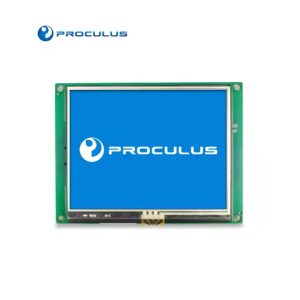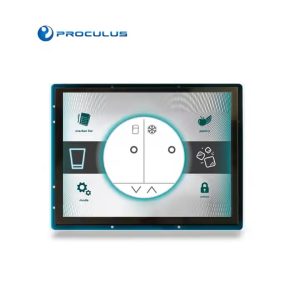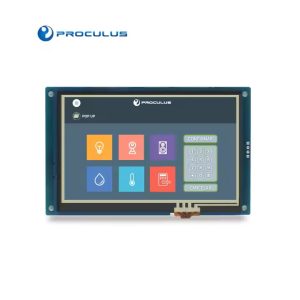The Essence and Versatility of Single Board Computers

Single Board Computers (SBCs) are a marvel of modern technology. They’re compact, powerful, and offer a myriad of applications that extend from industrial settings to our own households.
Understanding Single Board Computers
Single Board Computers are essentially complete computers condensed onto just one circuit board. They include all necessary features such as a processor, memory, storage, and input/output capabilities.
SBCs find their niche in situations where space is a constraint or where a full-sized computer would be an overkill. This makes them ideal for embedded systems- products that incorporate a computer but aren’t designed to function as a general-purpose computer.
The Industrial Applications of Single Board Computers
While the term ‘computer’ often conjures the image of a desktop PC, SBCs are increasingly finding their place in industrial settings due to their unique advantages.
The Edge of Single Board Computers
Unlike traditional desktop computers, SBCs are compact, energy-efficient, and generate minimal heat. They’re also more reliable due to fewer components that could potentially fail. These advantages make them invaluable in a variety of industrial applications.
For instance, in embedded systems within larger systems, SBCs handle specific functions. This could mean controlling production equipment in an industrial setup.
The Industrial Advantage
Industrial SBCs are designed to withstand harsh environments, offering a range of features that make them perfect for specific applications.
Their small size allows for easy integration into existing equipment. Moreover, they’re ruggedised to endure vibration, shock, and extreme temperatures, making them suitable for use in sectors such as automotive, aerospace, and military.
Industrial SBCs also offer extended temperature ranges and features like Ethernet and USB host ports for easy integration into industrial networks.
The Domestic Use of Single Board Computers
While SBCs were primarily designed for industrial applications, they’re also making their way into domestic settings.
Single Board Computers as Home Servers
One common domestic application of SBCs is their use as home servers. These computers store digital files and share them with other computers on the same network. They can also stream media to devices like Smart TVs or streaming media players.
Single Board Computers as Network-Attached Storage Devices
Another application is their use as Network-Attached Storage (NAS) devices. These devices are file servers connected to a network, allowing multiple users to access its files. NAS devices are commonly used in small businesses or home offices.
General Purpose Computing
SBCs can also be used for general computing tasks. For instance, the Raspberry Pi, a popular SBC, can be used as a desktop computer, a media centre, or even a gaming console.
Single Board Computers as Development Boards
SBCs are gaining popularity as development boards. These computers are designed for developing software or hardware. They’re often used by engineers and hobbyists for prototyping new ideas or testing new software.
Thanks to their low cost and user-friendly design, SBCs have become popular with hobbyists and makers. Many SBCs come pre-loaded with operating system (OS) and software support, simplifying the process of coding and executing small projects.
Common SBCs
There are many types of single-board computers with Android development board touch screens. The most common types are those designed for backplane connection. These come in designs that work with different architectures.
There are many manufacturers now using this technology, so here are some of the more popular brands on the market.
Intel
Intel, best known for its CPUs, has produced a range of powerful single board computers. These really are viable replacements for desktop PCs, as you can install Windows or Linux, and they come with quad-core GPUs, professional cases and full connectivity out of the box. They’re not really for hobbyists and come at a price that reflects the quality. They can be used in an office environment or even for gaming.
Raspberry Pi
Raspberry Pi is a well-known manufacturer of single-board computers. They are widely used in various settings, including schools, colleges, labs, and industrial applications. Raspberry Pi computers are affordable and regularly updated to keep up with technological advancements. One of the main advantages of Raspberry Pi is their ubiquity, which allows users to quickly learn how to use them if they have prior experience. Teachers and instructors are familiar with these, making them ideal for the classroom.

Arduino
Arduino offers a comparable alternative to Raspberry Pi, providing affordable, compact, and scalable single-board computers. The hardware and software are both open source, which helps to reduce costs. The operating system (OS) may cause compatibility issues if integrated with mainstream systems. However, these basic machines are not typically used for professional applications. They are ideal for learning to code, running machinery, or novelty applications. They are suitable for children and can also be a cost-effective way of running professional machinery if you have the necessary expertise.
Find A Suitable Display for Your SBCs
Our new product IPS HDMI Screen is an IPS custom lcd monitor with open frame for integration into equipment that has an HDMI output.

Discover a new way of interface for your equipment! Choose an industrial quality touch monitor for your application. It has many advantages:
IPS full Angle display
1.The viewing Angle is large
2.true color
3.Dynamic picture quality is excellent
4.Energy saving and environmental protection
Tempered glass touch panel
1.Hardness up to 6H, more durable and more scratch resistant
External audio output interface
1.Stereo dual speaker output shock sound
2.3.5mm external audio interface
Used as a games monitor
1.Support Xbox360,PS4,Switch etc
Used as a mini PC monitor
1.Support raspberry pie, Banana Pi, BB Black and other mainstream development board
2.Support Raspbian, Kali Linux, ubuntu and other mainstream systems, single touch plug and play without driver.
Used as a computer display
1.Support win10/win8/win7 system, support five-point touch plug and play driver.


 English
English


